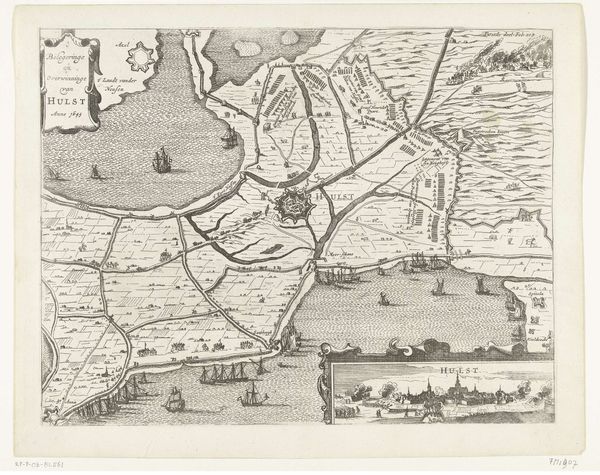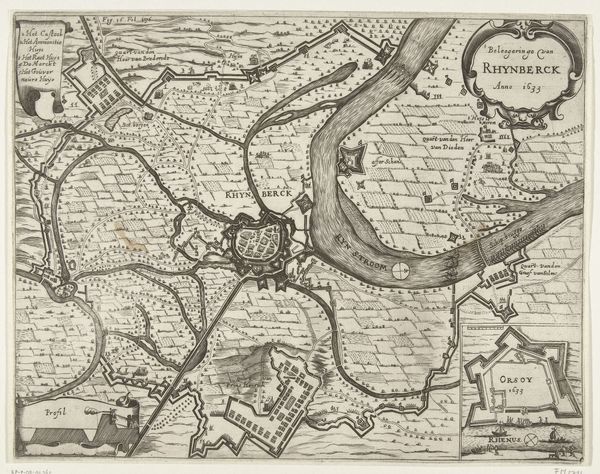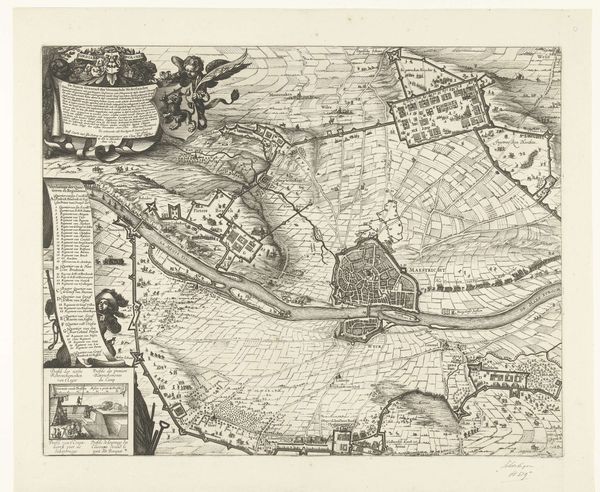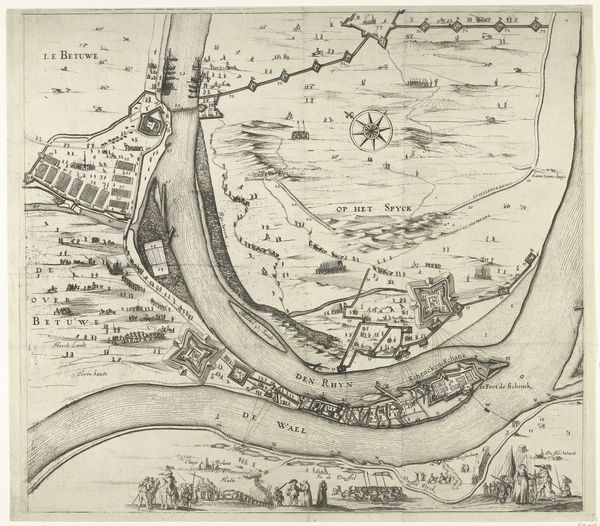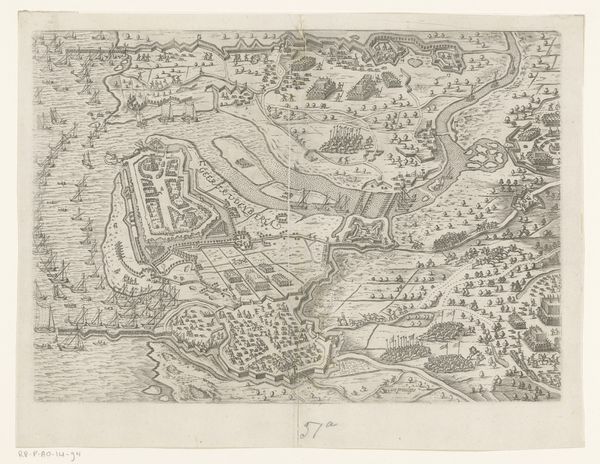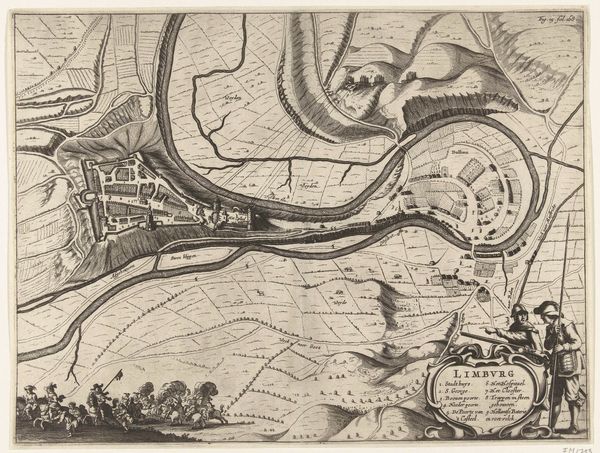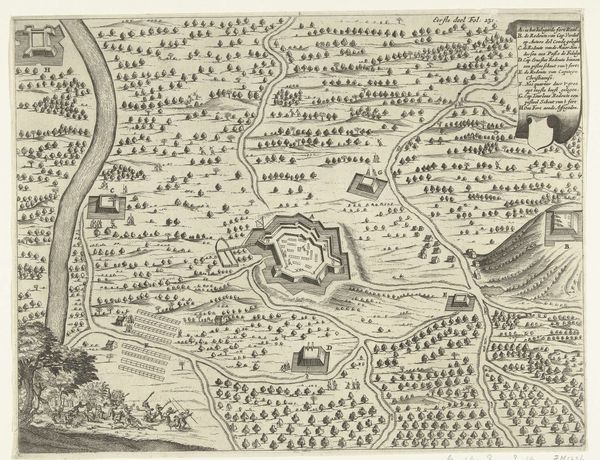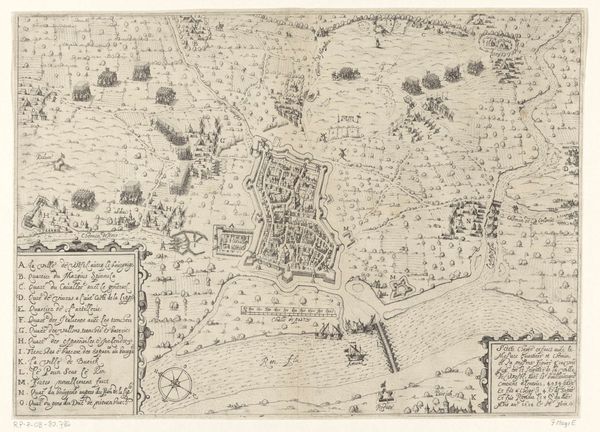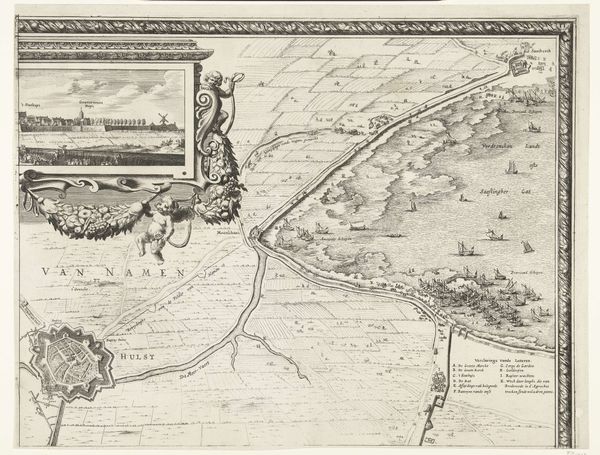
print, engraving
#
baroque
#
dutch-golden-age
# print
#
old engraving style
#
landscape
#
personal sketchbook
#
cityscape
#
engraving
Dimensions: height 420 mm, width 533 mm
Copyright: Rijks Museum: Open Domain
Claes Jansz. Visscher created this print of the Siege of Maastricht in 1632 using etching and engraving. The intricate lines and textures that define this image, from the meticulously rendered landscape to the detailed depiction of military encampments, are a direct result of these printing processes. Etching involves using acid to cut into a metal plate, while engraving uses a tool to carve lines directly onto the plate. The combination allowed Visscher to achieve both fine detail and broader tonal contrasts. Consider the labor involved, both in the physical creation of the siege itself and in the artistry required to document it. The print becomes a kind of historical artifact, capturing not just the event, but also the contemporary understanding of warfare, politics, and the relationship between landscape and human activity. Ultimately, by examining the materials and techniques, we gain a richer understanding of the historical moment and the artist's role in interpreting and communicating it to a wider audience.
Comments
No comments
Be the first to comment and join the conversation on the ultimate creative platform.

